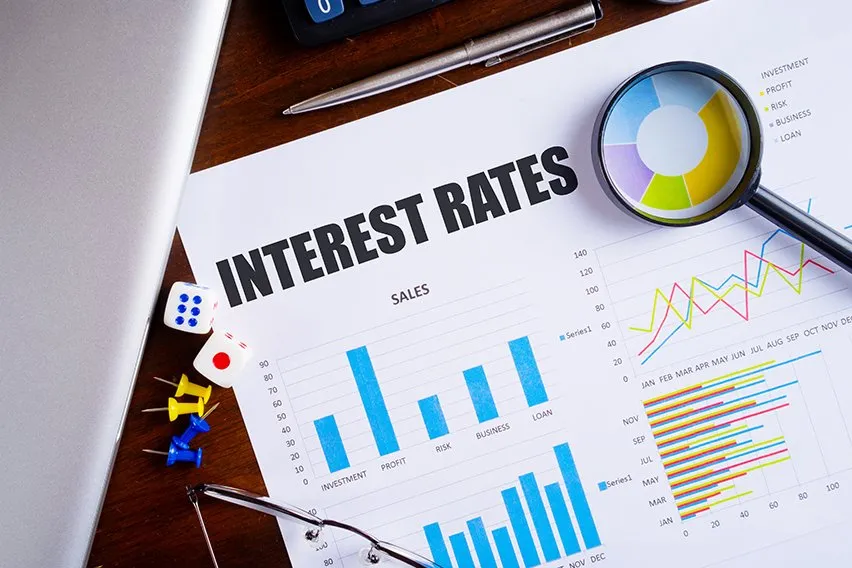What Is Interest Coverage Ratio? Definition & Calculation

Risk management is a vital part of running a business of any size.
After all, running a business can be risky. There are a lot of things that can potentially go wrong, especially when it comes to your business finances and cash flow.
There are times where a business will need to go into debt in order to raise capital for any upcoming costs. This is a normal practise as long as the business has the ability to handle it’s outstanding debts.
There are a number of metrics that are used to calculate whether or not a business can deal with the amount of debts it has. One of the most important metrics is what’s known as the interest coverage ratio.
But what exactly is the interest coverage ratio?
We’ll take a closer look at the definition, an overall breakdown and the business formula used to calculate the interest coverage ratio.
Here’s What We’ll Cover:
What Is the Interest Coverage Ratio?
What Is the Formula for the Interest Coverage Ratio?
What Is an Example of an Interest Coverage Ratio?
Why Is the Interest Coverage Ratio Important?
What Is a Good Interest Coverage Ratio?
What Are the Different Types of Interest Coverage Ratios?
What Are the Limitations of the Interest Coverage Ratio?
What Is the Interest Coverage Ratio?
The interest coverage ratio, otherwise known as the times interest earned ratio, is used to figure out a company’s ability to pay interest on its outstanding debt.
Put simply, the ratio measures how a business can cover its interest payments using its available earnings.
This ratio is used to help understand a business’ margin of safety for paying the interest on its debt over any given period of time. It is often used by creditors, investors and lenders to judge the risk of lending any amount of capital to a business.
The interest coverage ratio can be calculated by dividing a company’s earnings before interest and taxes by its interest expense. This is during a given period.

What Is the Formula for the Interest Coverage Ratio?
Before we get into the formula, let’s first take a look at understanding the interest coverage ratio.
When we refer to the “coverage”, we are referring to the length of time for which interest payments can be made. This is with the company’s currently available capital from its current earnings. This is typically the number of quarters to financial years.
Basically, it represents how many times the company can pay its debt interests using its earnings.
The formula that is used to calculate the interest coverage ratio is as follows:
Interest Coverage Ratio=EBITInterest Expense
*EBIT = Earnings Before Interest and Taxes
So the lower the ratio is, the more the company is burdened by its debt expenses. This in turn means that they have less capital that can be used in other ways.
Let’s say a lender or investor was looking at a company’s interest coverage ratio and it was 1.5 or lower. They may then question its ability to meet the interest expenses on any potential debt.
For a loan or line of credit to be safe, a company would need to have more than enough earnings to cover the interest payments. This is because a company would still need to repay the loan. Even in the case of unforeseeable circumstances or any financial hardship that may happen over the course of the loan term.
What Is an Example of an Interest Coverage Ratio?
Let’s say that you are running a small technology company. You currently have an EBIT of £60,000 and your total interest expenses are at £20,000.
To figure out your interest coverage ratio, you would need to divide 60,000 by 20,000 which would leave you with a ratio of 3.0.
This would mean that your tech company makes 3.0 more in earnings than their current interest payments.
This would give a clear indication that you wouldn’t have trouble making payments. As your current operations are producing more than enough revenue to pay your outstanding debt payments.
On the other hand, if you still had an EBIT of £60,000, but your total interest expenses are at £40,000 then it would be a different story:
60,000 / 40,000 = 1.5
This may give investors pause when considering whether or not to go ahead with giving you a loan or lines of credit. A ratio of 1.5 indicates that you may struggle to pay back interest payments if you come into any form of financial trouble.
Why Is the Interest Coverage Ratio Important?
Before a business can take off and make sustainable profit, they first simply need to stay above water. The ability to keep up with interest payments is a critical aspect of a business’ financial health and growth rate.
When a company starts to struggle with its debts, it can quickly start to spiral. They may have to borrow more money or dip into their cash reserves. This can easily lead down the path of financial ruin.
This is why looking at a business’ interest coverage ratio is important for lenders and investors. Looking at a single ratio in isolation may show a lot about a company’s current financial position. However, it is far more beneficial to track the ratio over a longer period of time.
This will give a much clearer picture of the company’s position and their trajectory. It can let the investors know whether the ratio is improving, declining or has become stable. This will then give a great assessment of the company’s short term financial health. It will also give an indication towards its long term health and growth rate.
What Is a Good Interest Coverage Ratio?
It’s difficult to define a “good” interest coverage ratio. This is because it is likely to vary from industry to industry so it is hard to pinpoint an ideal ratio. For example, the debt payments for manufacturing will be vastly different when compared with technology businesses.
The general rule of thumb is that any interest coverage ratio that is over 2 is acceptable. Investors and analysts will often look for ratios of at least three, as this shows a reliable and consistent revenue stream.
Though as we mentioned earlier, anything from 1.5 and less is widely considered to be a bad interest coverage ratio. This indicates that your business’s earnings aren’t high enough to comfortably service your outstanding debt. This would lead investors to worry that your company is at risk of potential bankruptcy in the future.
What Are the Different Types of Interest Coverage Ratios?
There are two common variations of the interest coverage ratio. These are important to consider when studying the ratios of companies. Both of these variations come from altering the EBIT:
EBITDA
This variation uses earnings before interest, taxes, depreciation and amortization, or EBITDA. This is instead of using EBIT when calculating the coverage ratio.
This variation leaves out depreciation and amortization, so the numerator when using EBITDA will often be higher than when you are using EBIT. This is because whilst both methods will be using the same interest expenses, the EBITDA will produce a higher interest coverage ratio.
The formula:
Interest Coverage Ratio=EBITDAInterest Expense
EBIAT
The second variation uses earnings before interest after taxes, or EBIAT. This again is instead of EBIT when calculating the interest coverage ratio.
This method takes into consideration what happens when you deduct tax expenses from the numerator. This is done in an attempt to give a more accurate picture of the company’s ability to pay its interest expenses.
Taxes are an important financial aspect to consider and can differ from business to business. So to get a much clearer picture of the company’s financial position, EBIAT can be used to calculate the ratio instead of EBIT.
The formula:
Interest Coverage Ratio=EBIATInterest Expense

What Are the Limitations of the Interest Coverage Ratio?
Like any metric that attempts to gauge the financial health of a business, it comes with its own limitations that are important to consider.
As we mentioned earlier, interest coverage varies from industry to industry as well as from company to company. So for one business a ratio of 2 may be perfectly acceptable, but for another an investor may not feel comfortable with anything lower than 3.
Therefore a company’s ratio should be evaluated in line with the industry averages. And ideally, it should also only be compared with businesses with similar business models and revenue numbers.
It is also possible for companies to isolate or exclude certain types of debt in their calculations. This can give a skewed view of their interest coverage ratio and can mislead investors.
Therefore it’s important to figure out if all debts were included when looking at a business’s coverage ratio.
Key Takeaways
When looking at the accounts of any business, there should be a wide range of financial ratios and metrics used. No metric can be used in isolation to figure out the financial health of a company as they all have their pitfalls.
The interest coverage ratio is a useful tool and can be used to great effect. But it should never be used as a singular metric without taking other measures into account.
Are you looking for more business advice on everything from starting a new business to new business practices?
Then check out the FreshBooks Resource Hub.
RELATED ARTICLES

 What Is Direct Debit & How Does It Work? A Guide
What Is Direct Debit & How Does It Work? A Guide What Is a Capital Asset? The Ultimate Guide
What Is a Capital Asset? The Ultimate Guide What Is a Default Account & How It Impacts Your Credit Profile
What Is a Default Account & How It Impacts Your Credit Profile How to Improve Cash Flow in Your Business: 11 Ways
How to Improve Cash Flow in Your Business: 11 Ways What Is Disposal of Assets? Definition & Explanation
What Is Disposal of Assets? Definition & Explanation What Are Abbreviated Accounts? Everything You Need to Know
What Are Abbreviated Accounts? Everything You Need to Know